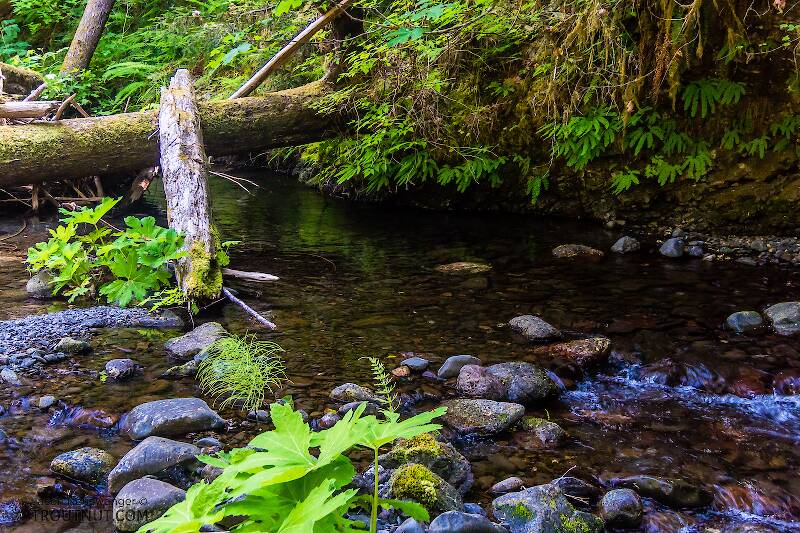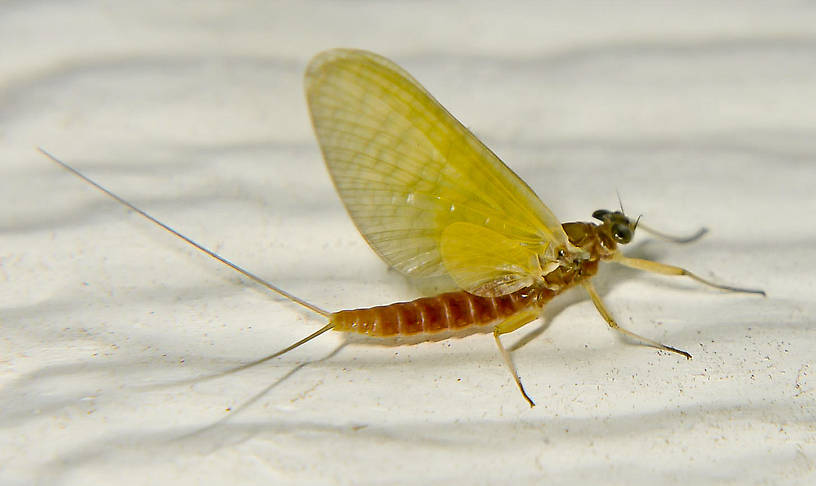
Salmonflies
Pteronarcys californica
The giant Salmonflies of the Western mountains are legendary for their proclivity to elicit consistent dry-fly action and ferocious strikes.
Featured on the forum

Troutnut is a project started in 2003 by salmonid ecologist Jason "Troutnut" Neuswanger to help anglers and
fly tyers unabashedly embrace the entomological side of the sport. Learn more about Troutnut or
support the project for an enhanced experience here.
Pale Brown Duns
Like most common names,"Pale Brown Dun" can refer to more than one taxon. They're previewed below, along with 6 specimens. For more detail click through to the scientific names.
Mayfly Species Rhithrogena hageni
These are very rarely called Pale Brown Duns.
According to Fred Arbona in Mayflies, the Angler, and the Trout, this is an excellent hatch and one of the most common fast-water mayflies in the West.
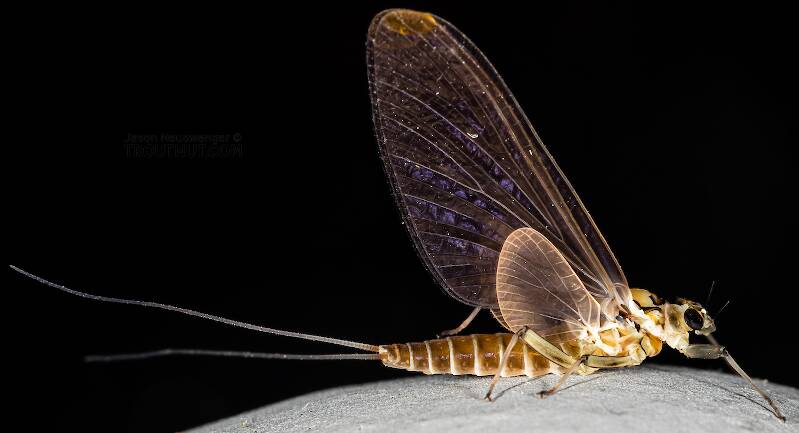
I was surprised by the olive cast on the body of this female Rhithrogena dun, which led me to mistake it for a western green drake (Drunella) in the field. I was pleasantly surprised to get a closer look and find something I hadn't collected yet. Its species ID is based on proximity to male spinner collected on the same trip, as well as physical similarity (size, tergite coloration, dark streaks on the femora) to that specimen.
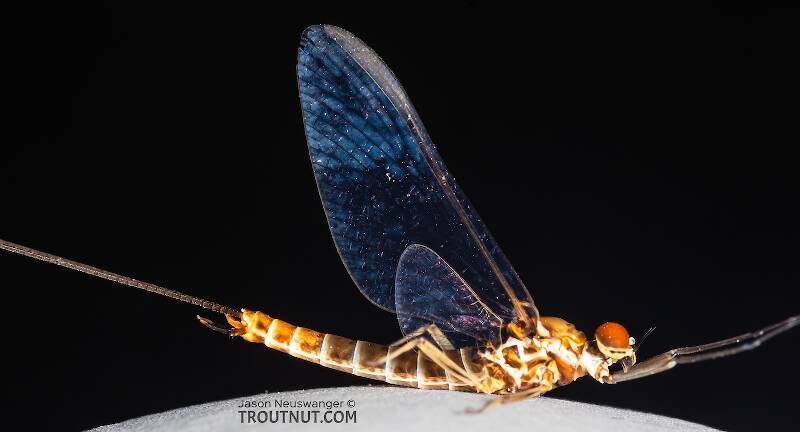
Although I could not find the preserved specimen to examine under my good new microscope, I'm tentatively calling it one Rhithrogena hageni, based on apparent similarity to this specimen, which I was able to positively ID.
The relative angle of the penes is a bit shallower in this specimen, but I photographed another specimen from the same collecting trip (and I think even the same swarm, although I don't recall for sure) as the other one, and it had the shallower angle seen on this specimen. I'm guessing it's just variation within the species.
The relative angle of the penes is a bit shallower in this specimen, but I photographed another specimen from the same collecting trip (and I think even the same swarm, although I don't recall for sure) as the other one, and it had the shallower angle seen on this specimen. I'm guessing it's just variation within the species.
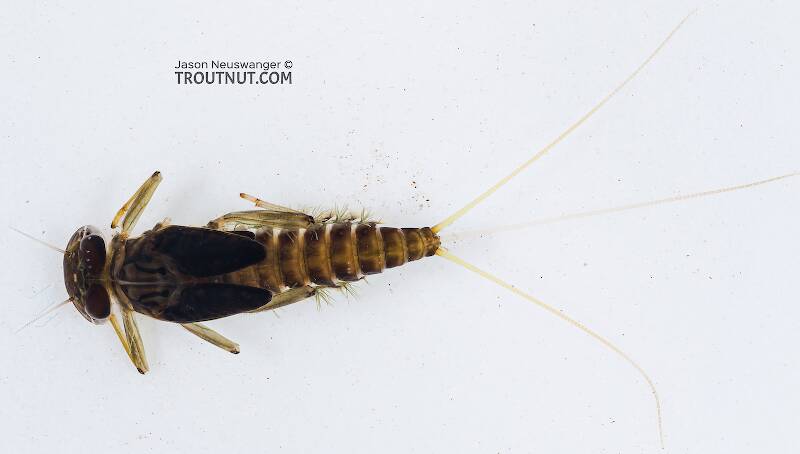
This mature nymph was collected in the same riffle as a male spinner, from which I got the identification for both.
See 3 more specimens...
Mayfly Species Cinygmula reticulata
These are very rarely called Pale Brown Duns.
Cinygmula reticulata is probably the second most important species of Cinygmula behind Cinygmula ramaleyi, perhaps because the waters where it can be found in good numbers are often more remote. They have been reported as abundant in many high country streams of the Southern Rockies as well as the High Sierra's Eastern slope. An obvious difference in their coloration may be the easiest way to tell them apart. Cinygmula ramaleyi is more somber with a brownish body and dark gray wings and is often confused with the similar sized and colored Ephemerella tibialis, in spite of the difference in tail counts. Cinygmula reticulata on the other hand is a bright cinnamon dorsally with pale creamy legs and pale wings that are often a brilliant canary yellow. This is one of North America's most beautiful mayflies.
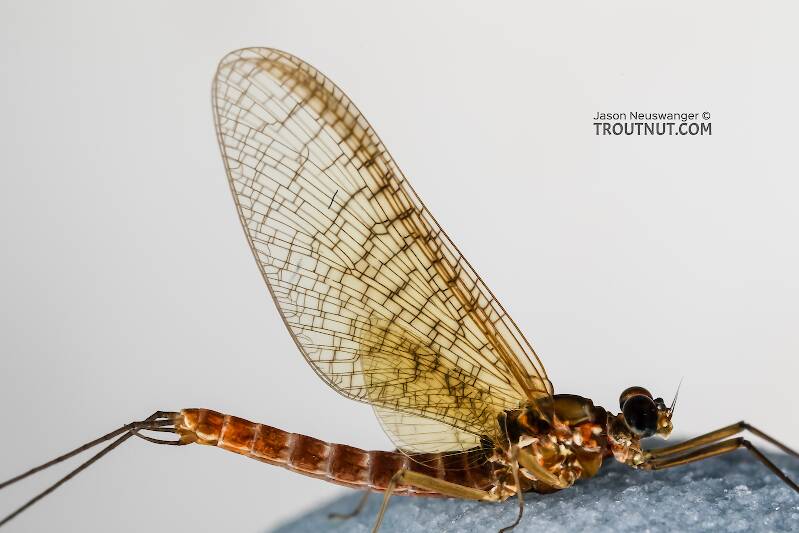
The lengths of the wing and body, measured with a caliper, are both 8 mm.
Keys in Needham's 1935 Biology of Mayflies point to either Cinygmula reticulata or Cinygmula gartrelli. It seems to have crossveins in costal half of forewing only, slightly margined with brown and wings tinged with amber at base and along costal margin of both wing (gartrelli) as opposed to all crossveins of both wings faintly but broadly margined with pale smoky and wings entirely amber-tinged (although there is a slight amber tinge throughout, just more pronounced in places) as in reticulata. However, wing length reported for reticulata (9 mm) is closer to this specimen than gartrelli (10 mm). Ventral median marks are supposed to be "traces" for reticulata and "present" for gartrelli. Descriptions for both species involve semi-hyaline anterior abdominal segments not present on my specimens. Distribution records suggest reticulata lives nearby, so I'm going with that, but I can't confidently rule out gartrelli.
Keys in Needham's 1935 Biology of Mayflies point to either Cinygmula reticulata or Cinygmula gartrelli. It seems to have crossveins in costal half of forewing only, slightly margined with brown and wings tinged with amber at base and along costal margin of both wing (gartrelli) as opposed to all crossveins of both wings faintly but broadly margined with pale smoky and wings entirely amber-tinged (although there is a slight amber tinge throughout, just more pronounced in places) as in reticulata. However, wing length reported for reticulata (9 mm) is closer to this specimen than gartrelli (10 mm). Ventral median marks are supposed to be "traces" for reticulata and "present" for gartrelli. Descriptions for both species involve semi-hyaline anterior abdominal segments not present on my specimens. Distribution records suggest reticulata lives nearby, so I'm going with that, but I can't confidently rule out gartrelli.
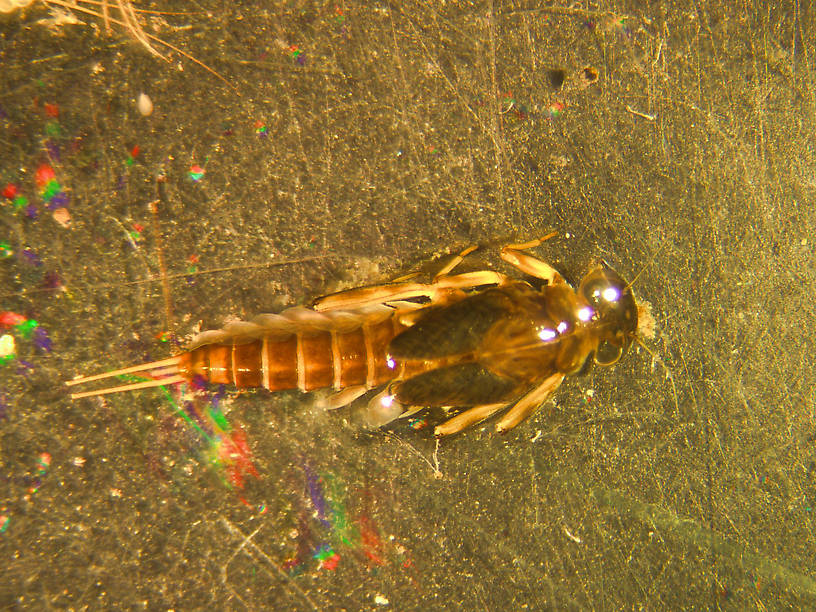
I collected several live specimens of nymphs and reared them to the imago stage. They were C. reticulata. The interesting thing is they were collected in May and were emerging along with Rhithrogena (March Brown). This seems to be an overlooked hatch since in some rivers it emerges very early, before runoff.
References
- Arbona, Fred Jr. 1989. Mayflies, the Angler, and the Trout. Nick Lyons Books.

